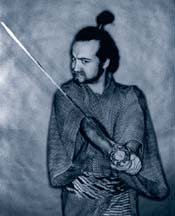On January 26, 2007, 30 SMUHSD teachers had the opportunity to spend the day with Chris Walsh of WestEd and the Google Teacher's Academy and Kathleen Ferenz of CTAP, who is also a Google Certified Teacher. The 6 1/2 hours flew by with hardly any breaks and teachers leaving with a wealth of new tools to use with their classes.
As the host of the day, I started with a quick synopsis of the Google Teacher's Academy, which I also attended and showed my 'Google Teacher Video.' The video was probably one of the items that was the most difficult for most applicants to complete. I also showed the group the 'EPIC 2015' Video that was one of the things that really crystallized my thinking about the Global Communications Pathway.
After I introduced Chris, the day went from 0-100 mph in about 3 seconds. We were able to see all of the cool tools that Google has and their application in the educational process. Most people know Google for search, which is their primary business, but we quickly learned the path to: 'More' and 'Even More.' inside of Google Search and Advanced Search. As Chris talked about the SMS functions of most cell phones, I was able to demo it by pulling out my cell phone and texting a message to '46645' or 'GOOGL' and putting in a few search terms. Within about 20 seconds, I had my results, which were my recommendations for lunch. Soon after, I did my demo, there was a room full of teachers performing SMS searches on their cell phones. Wait until the kids see this one!
After about an hour, Chris moved into the computer lab and went through Google Earth, SketchUp, Blogger and Docs and Spreadsheets. One of the cool things was the ability to draw a house in SketchUp and then place it anywhere in the world using Google Earth. During the Docs and Spreadsheets demo, Chris created a document and shared it with me in the other room and I was able to edit it in real time and have the teachers working in the room see the changes pop up on the screen as I made them on my end. This isn't the first time we have done this... Remember Monterey, Chris. If you want to see an end product with students using Docs and Spreadsheets, here's my Fall Semester Final Projects with the kids using 'hyperlinked writing.' (See post on Three Dimensional Contexts)

All in all the day was a HUGE success and based on the evaluations, I hope we can do another day again next year.
To all of those who attended... thanks for your participation. If you didn't get the chance to attend, talk to someone who did and get their notes.
Oh.... and I forgot the best part of all of this... All of the tools that Chris and Kathleen shared with our teachers are absolutely FREE!
Want to see a few pics of the day... click here!















